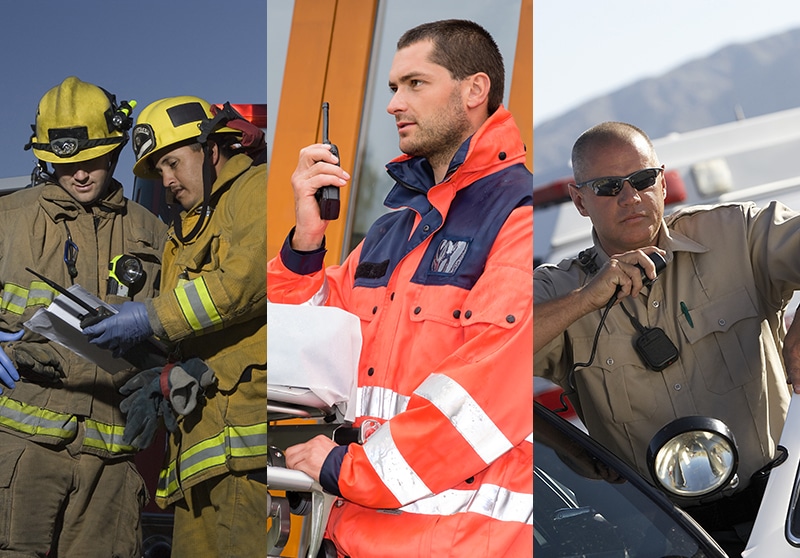
Critical communication systems have to meet fundamental requirements: they must be robust, provide optimum coverage and offer high reliability and resilience in the event of failures. But in addition, it is equally desirable that the investment made in the acquisition, deployment and operation gives the highest return. All these characteristics describe both models of operation, although the truth is that in terms of investment optimization, the shared ones have some advantage.
Public security agencies (police, fire brigades, ambulance), municipal services (waste collection, parking management, water control), transport management entities (metro, buses, trams …) and even private companies can, despite of not sharing an operational core or common mission, operate using the same TETRA infrastructure, and thus share the costs of both its deployment and its maintenance.
In this sense, TETRA combines the capabilities and conditions of interoperability, flexibility and spectral efficiency required in this kind of environments, as well as being a technology that has proven great performance and long lifetime in the thousands of systems deployed throughout the world. Likewise, it is easily scalable, which means that extensions can be carried out easily on the system initially deployed, in order to serve more and more users. As another added value, It offers the tools to constantly measure traffic and on that information, make relevant adjustments.
Thus, a TETRA system, as Teltronic’s NEBULA infrastructure, guarantees that each agency has exclusive control over its users, groups and fleets, with total privacy and without inferences. For this purpose, it offers an operation model that provides independence to the different agencies, not only in the management of groups and users, but also in the associated parameters, such as accessible TETRA services, operation areas, reproduction of their own recordings, access to their own call records…

Therefore, a global manager of the network is necessary, which, starting from a global vision of the system, can enable access to new agencies and take charge of the good operation and health of the system so that the agencies can make use of it. That is, this global manager would be located in a higher level than the user agencies, and would arbitrate the correct state of the system and resolve possible conflicts among users. In this way, for example, the global manager would be in charge of setting the different calling priorities if necessary.
SUCCESSFULL EXPERIENCES
Throughout its more than 40 years of experience, Teltronic has developed several successful cases in the design and deployment of shared networks. Itelazpi, in the Basque Country, is a great example of how a shared network can provide solutions adapted to each user, ensuring their independent management and the coordination of all of them in cases of emergency. Start-up in 2009, it has been growing progressively with the inclusion of new agencies and user groups, as well as with new applications and services. The exploitation model carried out by Itelazpi supposes a series of key advantages in terms of coverage, security and maintenance of the network, which added to the interoperability between the different organizations of public security results in a more integrated and effective response.
RESCAN is the communication system that the Canarian Government implemented to improve emergency management and guarantee security. The network covers the entire territory and, together with 7,000 terminals, provides communications services to more than 500 user groups.
Outside Spain, GIRN (Government Integrated Radio Network) is the name of the national TETRA network that guarantees public safety in Malaysia. The capital Kuala Lumpur, its metropolitan area and the neighboring regions are just some of the areas in which the network offers its coverage. 14 public safety agencies make use of the network and, in addition, there are transportable base stations that provide coverage in inhospitable regions in cases of emergency.
The coexistence of the agencies, whether at local, regional or even national level, can be based on a model of granting each one a different degree of service in accessing the system. In this way, once that the degree of service needed by each agency is defined, the system automatically assigns the resources according to the level of service previously agreed. Besides, looking towards the future, It will be possible to use big data strategies to balance this degree of service between agencies more accurately, or redefine their values to adjust to the operational reality of each agency.


